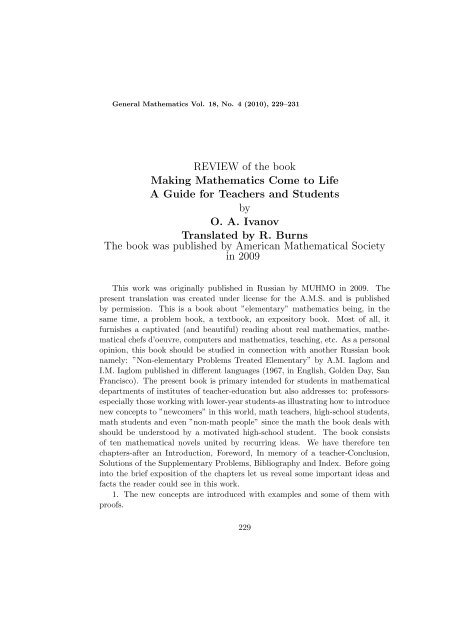Bookmaking Mathematics
Quick Details

I write, mostly fiction (my books).
I have a big silkpunk epic fantasy series called The Dandelion Dynasty, in which the heroes are engineers, not wizards. “Silkpunk” is my invention; I use it to describe a technology aesthetic based on a science fictional elaboration of traditions of engineering in East Asia’s classical antiquity.
Manuscript of the Month: Vergil’s Aeneid and the Mathematics of Bookmaking N. Kıvılcım Yavuz is conducting research on pre-1600 manuscripts at the Kenneth Spencer Research Library. Each month she will be writing about a manuscript she has worked with and the current KU Library catalog records will be updated in accordance with her findings. Definitive, and extensively revised and updated 3rd edition on the history, theory, practice and mathematics of bookmaking, plus the mathematics of off-course betting, bets and their computation and liability control. Further reading 'How to make a book', Phil Bull, London: Morrison &. Muslims greatly advanced the study of mathematics. They based their work in part on ideas from ancient Babylon, India, and Greece. For example, scholars in Baghdad’s House of Wisdom translated the works of the Greek mathematician Euclid (YOO–klid). They also translated important texts from India.
My story, “The Paper Menagerie,” is the first piece of fiction to win three genre literary awards: the Hugo, the Nebula, and the World Fantasy Award.
Mathematics of bookmaking., Dutch Book Arguments in the Stanford Encyclopedia of Philosophy. Probabilities as Betting Odds, report by C. Notes on the Dutch Book Argument, by D. Coherence (philosophical gambling strategy) Fixed-odds. A book is a printed work that is meant to communicate. To communicate is to share ideas or information. A book is made up of pages that are usually enclosed in a protective cover. People have written books about all kinds of subjects. Among the countless types of books are novels, picture books, cookbooks, how-to books, poetry books, and textbooks.

I also consult and speak publicly on various subjects such as cryptocurrency, futurism, implications of new technologies (5G, GPT-3, nanomaterials, etc.) science fiction, virtual reality, and sustainable storytelling.
Occasionally, I translate Chinese fiction into English.
The press kit contains official bios of various lengths, sample reviews, interviews, as well as downloadable high-res headshots & covers.
Mathematics Of Bookmaking
Business Representatives
- Literary agent: Russell Galen of Scovil Galen Ghosh.
- Foreign rights (non-North American): Danny Baror and Heather Baror of Baror International, Inc.
- Film/TV/media rights: Angela Cheng Caplan of Cheng Caplan Company.
Press Kit
Official Bios
250 words:
Ken Liu (http://kenliu.name) is an American author of speculative fiction. He has won the Nebula, Hugo, and World Fantasy awards, as well as top genre honors in Japan, Spain, and France, among other countries.
Liu’s debut novel, The Grace of Kings, is the first volume in a silkpunk epic fantasy series, the Dandelion Dynasty, in which engineers play the role of wizards. His debut collection, The Paper Menagerie and Other Stories, has been published in more than a dozen languages. A second collection, The Hidden Girl and Other Stories, followed. He also wrote the Star Wars novel The Legends of Luke Skywalker.
He has been involved in multiple media adaptations of his work. The most recent projects include “The Hidden Girl,” under development by FilmNation Entertainment as a TV series; “The Message,” under development by 21 Laps and FilmNation Entertainment; “Good Hunting,” adapted as an episode in season one of Netflix’s breakout adult animated series Love, Death + Robots; and AMC’s Pantheon, which Craig Silverstein will executive produce, adapted from an interconnected series of short stories by Liu.
Prior to becoming a full-time writer, Liu worked as a software engineer, corporate lawyer, and litigation consultant. He frequently speaks at conferences and universities on a variety of topics, including futurism, cryptocurrency, history of technology, bookmaking, the mathematics of origami, and other subjects of his expertise.
Liu is also the translator for Liu Cixin’s The Three-Body Problem, Hao Jingfang’s “Folding Beijing” and Vagabonds, Chen Qiufan’s Waste Tide, as well as the editor of Invisible Planets and Broken Stars, anthologies of contemporary Chinese science fiction.
Liu lives with his family near Boston, Massachusetts.
100 words:
Ken Liu (http://kenliu.name) is an American author of speculative fiction. A winner of the Nebula, Hugo, and World Fantasy awards, he wrote the Dandelion Dynasty, a silkpunk epic fantasy series (starting with The Grace of Kings), as well as short story collections The Paper Menagerie and Other Stories and The Hidden Girl and Other Stories. He also authored the Star Wars novel The Legends of Luke Skywalker.
Prior to becoming a full-time writer, Liu worked as a software engineer, corporate lawyer, and litigation consultant. Liu frequently speaks at conferences and universities on a variety of topics, including futurism, cryptocurrency, history of technology, bookmaking, the mathematics of origami, and other subjects of his expertise.
50 words:
A winner of the Nebula, Hugo, and World Fantasy awards, Ken Liu (http://kenliu.name) is the author of the Dandelion Dynasty, a silkpunk epic fantasy series (starting with The Grace of Kings), as well as The Paper Menagerie and Other Stories and The Hidden Girl and Other Stories.
Selected Reviews:
The Grace of Kings

Amal El-Mohtar, NPR:
Liu’s world is beautiful, nuanced, fierce, original and diverse; it’s refreshing to read doorstop fantasy in which the geographies and cultures aren’t Europe-with-more-apostrophes. But neither does this feel like alt-China: It reads much more like a world invented than transposed, and the warring states of Dara draw on a multitude of influences and references without being reductive fantasy-world allegories of any of them.
It’s mode of composition is also fascinating to me: Where something like A Game of Thrones takes a period of history as its source material, The Grace of Kings feels much more in conversation with works of medieval romance and folk stories as it builds its epic architecture, with the rather surprising result that it also feels far more immersive and realistic.
Andrew Liptak, io9:
With The Grace of Kings, Ken Liu has constructed a remarkable fantasy narrative with an incredible cast of characters, a heart wrenching story and a book that genuinely plays with style and form that should serve as a template for fantasy epics that will come after it. Liu has imbibed a great deal of history (Liu noted that there’s no small influence from some of the epic stories from the Han Dynasty of China), and the depth of his world-building leads to a rich and vibrant world that deserves endless stories. Fortunately, there’s a wonderful map, glossary and list of characters which helped me figure out where everything was happening and who everyone was.
But Liu is aiming to do more than just set his story in an exotic location and play with an interesting set of characters — it’s a genuinely interesting experiment in form and style, which allows him to expand the vision and scale of the story he’s telling. In a recent interview in SF Signal conducted by Paul Weimer, Liu noted that he was influenced by the negative space in Chinese artwork: “Negative space is important in the aesthetic of traditional Chinese arts like brush painting and calligraphy, and I wanted to try for a similar effect in the novel.”
The Paper Menagerie and Other Stories
Library Journal:
If your soul is an ice cube, to what lengths will you go to have a warm, passionate life? “State Change” is one of 15 stories and novellas collected here by the author of The Grace of Kings. As Liu notes in his preface, the volume has the “flavor of a retrospective,” including some of his most popular works such as the title selection, “The Paper Menagerie,” which won the Hugo, Nebula, and World Fantasy awards, as well as lesser known tales. He also features a new work, “An Advanced Reader’s Picture Book of Comparative Cognition,” that addresses the love between parents and children when they are separated by incredible distances.
Verdict: These remarkable stories highlight Liu’s themes of family, love, and politics and gathered in one collection pack an even bigger punch. Those who revere shorter speculative works will definitely want this book.
Amal El-Mohtar, NPR:
Ken Liu’s The Paper Menagerie and Other Stories is a book from which I staggered away, dazed, unable to speak. I have wrestled with how to review it, circled my metaphors like a wary cat, and finally abandoned the enterprise of trying to live up to its accomplishment. I will be honest, and blunt, because this is a book that has scoured me of language and insight and left itself rattling around inside the shell of me.
I have never been so moved by a collection of short fiction. I was at times afraid to read more. Every single story struck chords in me profound enough to hurt, whether about the love and cruelty of families; the melancholy of thermodynamics; the vicious unfairness of history and the humbling grace with which people endure its weight. Stories so often take us out of ourselves; Liu’s stories went deep into my marrow, laying bare painful truths, meticulously slicing through the layers of pearl to find the grain of sand at its heart.
Selected Interviews
- “We get to define the stories we want to be told about us.” — Mary Wang interviews me for Guernica magazine. Using photos of his text editors, mapmaking software, and 3D-printed prototypes, the writer talks about technology, myth, and telling stories during a pandemic.
Headshots:
Clicking on the thumbnails will give you full-res images. Please credit the photographer in each case.
Book Covers:
Originals
Translations
A book is a printed work that is meant to communicate. To communicate is to share ideas or information. A book is made up of pages that are usually enclosed in a protective cover. People have written books about all kinds of subjects. Among the countless types of books are novels, picture books, cookbooks, how-to books, poetry books, and textbooks.
The first step in creating a book is for an author to write a manuscript. A manuscript is a book before it has been published. The author finds a publisher, or a company that makes and sells books. Editors at the publishing company help the author improve the manuscript. They make sure that the ideas are complete, that the writing is clear, and that there are no errors.
Then the manuscript goes to a designer. This person arranges the text and pictures on the pages so that the book looks nice and is easy to read. A designer also creates the cover.
Editors and designers continue working on the pages until they are perfect. Most of this work is done on computers. The designed book is stored in computer files.
Next, the computer files are used to create printing plates. Printing plates are sheets of metal or plastic that have the book’s text and pictures on them. Printing plates are put on printing presses and used to print the book.

Most book pages are printed on one long roll of paper. After printing, the paper is folded, cut, and arranged into bundles of pages called signatures. The signatures are sewn and glued together along the folded edges. Finally, the book cover is glued to the signatures. Books can have either a hard cover or a soft cover.
The earliest forms of bookmaking date back to about 3000 bce. The first ancestors of books were Egyptian papyrus rolls. The rolls consisted of a long strip of paper made from a type of water grass called papyrus. Other ancient forms were made of clay tablets, sheets of animal skin, or bundles of bamboo. The Chinese invented paper around 100 ce. In Europe people continued to use animal skins, called vellum or parchment long after that. The first papermaking equipment reached Europe in the 1300s.
During this time books were difficult to produce. The text was written by hand. Many books produced in Europe and in the Islamic world included elaborate drawings. As a result, books were expensive and hard for most people to get. Only wealthy, powerful people and certain scholars and religious leaders read these early books.
The invention of printing changed that. In about 1450 a German craftsman named Johannes Gutenberg invented a special type of printing press. Gutenberg’s press used metal type, or letter shapes made from metal. Gutenberg arranged the metal type in trays to spell out words and sentences. Then he spread ink onto the metal type and pressed the trays against sheets of paper. The trays could be used again and again.
Gutenberg’s type and press could print many books quickly. By the 1500s thousands of printing shops were producing millions of copies of books. Books became available to ordinary people for the first time.
Bookmaking Mathematics Definition
Today books are published in every language. Personal computers have allowed people to publish their own books. Many books can be read or downloaded from the Internet. This has made books easier to get than ever before.